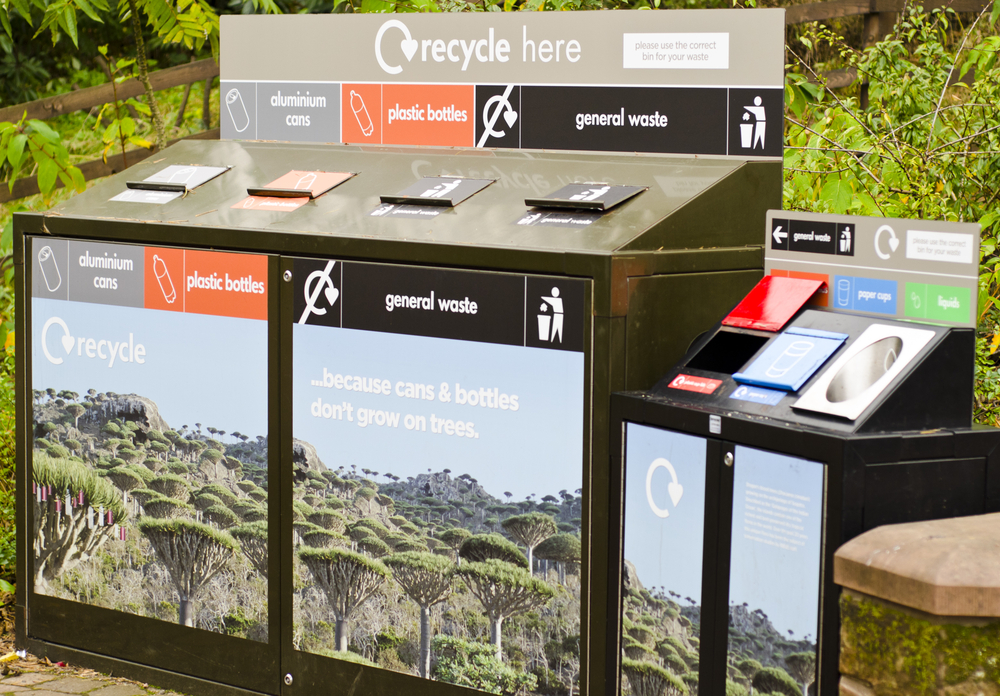The post The UK councils with the highest and lowest recycling rates appeared first on TD (Travel Daily Media) Brand TD.


New findings have revealed the areas in England that are best at recycling, with South Oxfordshire District Council taking the top spot.
Printer cartridge experts at Cartridge Save analysed newly released government statistics from the Department for Environment Food & Rural Affairs on recycling habits in England. The data looked at the percentage of household waste sent for reuse, recycling, or compositing in each authority between 2022 and 2023.
Taking the top spot was South Oxfordshire District Council. The authority was revealed to have the highest recycling rate, with 61.6% of household waste sent for reuse, recycling or composting.
Following in second was the Three Rivers District Council, with 61.5% of waste sent for reuse, recycling or compositing. In third was Vale of White Horse District Council, with the authority recycling or composting 60.9% of household waste.
Ranking fourth was St Albans City and District Council, with the authority sending 60.1% of waste for reuse, recycling or composting. Rounding out the top five was Stratford-on-Avon District Council, with a household recycling rate of 60.0%.
In sixth was East Devon District Council, with sending 59.5% of waste sent for reuse, recycling or composting. Placing seventh was Stockport MBC, which reported 59.3% of waste sent for reuse, recycling or composting.
Surrey Heath Borough Council (59.3%), Dorset Council (59.1%) and North Somerset Council (58.9%) round out the top ten.
The 10 authorities with the highest household recycling rates
|
Rank |
Authority |
Region |
Percentage of household waste sent for reuse, recycling or composting |
|
1. |
South Oxfordshire District Council |
South East |
61.6% |
|
2. |
Three Rivers District Council |
Eastern |
61.5% |
|
3. |
Vale of White Horse District Council |
South East |
60.9% |
|
4. |
St Albans City and District Council |
Eastern |
60.1% |
|
5. |
Stratford-on-Avon District Council |
West Midlands |
60.0% |
|
6. |
East Devon District Council |
South West |
59.5% |
|
7. |
Stockport MBC |
North West |
59.3% |
|
8. |
Surrey Heath Borough Council |
South East |
59.3% |
|
9. |
Dorset Council |
South West |
59.1% |
|
10. |
North Somerset Council |
South West |
58.9% |
At the other end of the scale, the authority with the lowest recycling rate was the London Borough of Tower Hamlets, with just 17.7% of household waste sent for reuse, recycling or composting.
Second from the bottom was Liverpool City Council, with a recycling rate of 17.9% while Barrow-in-Furness Borough Council, had the third lowest rate, with 18% of household waste sent for reuse, recycling or composting.
The London Borough of Wandsworth ranked fourth lowest, with a recycling rate of 22.4%. Rounding out the bottom five was Birmingham City Council, with 22.9% of household waste sent for reuse, recycling or composting.
Completing the bottom ten was London Borough of Lewisham (23%), Middlesborough Borough Council (23.1%), The Royal Borough of Kensington and Chelsea (23.1%), Dartford Borough Council (23.5%) and Western Riverside Waste Authority (24.3%).
The 10 authorities with the lowest household recycling rates
|
Rank |
Authority |
Region |
Percentage of household waste sent for reuse, recycling or composting |
|
1. |
London Borough of Tower Hamlets |
London |
17.7% |
|
2. |
Liverpool City Council |
North West |
17.9% |
|
3. |
Barrow-in-Furness Borough Council |
North West |
18.0% |
|
4. |
London Borough of Wandsworth |
London |
22.4% |
|
5. |
Birmingham City Council |
West Midlands |
22.9% |
|
6. |
London Borough of Lewisham |
London |
23.0% |
|
7. |
Middlesbrough Borough Council |
North East |
23.1% |
|
8. |
Royal Borough of Kensington and Chelsea |
London |
23.1% |
|
9. |
Dartford Borough Council |
South East |
23.5% |
|
10. |
Western Riverside Waste Authority |
London |
24.3% |
Commenting on the findings, Ian Cowley, Managing Director of Cartridge Save said: “The data shows that many people are committed to recycling their waste and bettering the planet. However, the numbers are still low in many places, with several authorities reporting a recycling rate of less than 20%.
“The slight inconvenience of recycling is significantly outweighed by its environmental benefits, and there are many ways to make recycling easier and effectively incorporate recycling habits into your everyday routine.
“There are small steps that can be taken to make recycling easier. For example, having recycling bins in the bathroom or bedroom, instead of just the kitchen can make it more convenient, and make you more likely to adopt the habit.
“Try to ensure that all items are clean, dry and recyclable beforehand. If you have separate bins according to material, ensure that you are putting them in the correct ones.
“Composting organic waste is a great way of preventing it from being sent to landfill. This can be done in a garden compost bin or through garden waste collection services, which are available in many areas.
“Repurposing items is another effective way to reduce waste. Many things can be given new life and be used in creative ways instead of being thrown away. If they’re in good condition and you can’t find any use for them, donate them.
“Reducing consumption or buying from more sustainable brands is one of the best ways to help protect the environment. Stick to buying reusable products as much as possible, as opposed to disposable or single-use items.
“Additionally, look for brands that use minimal and eco-friendly packaging and materials. Where possible, shopping secondhand is also better than buying new.
“Finally, partaking in community recycling programs and staying aware of any local recycling initiatives can engage you further in striving for zero waste and reducing carbon emissions.”
The post The UK councils with the highest and lowest recycling rates appeared first on Brand TD.

